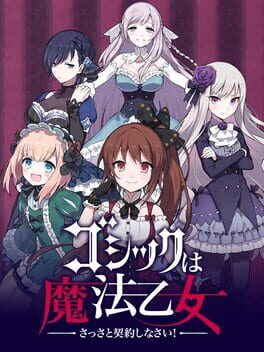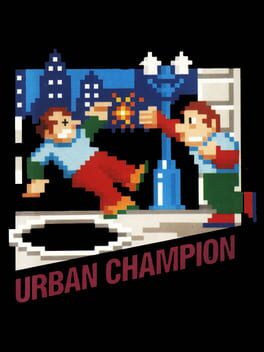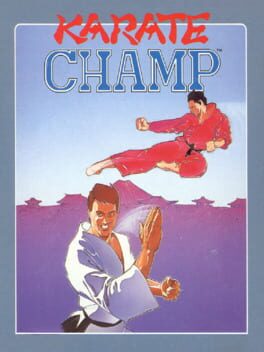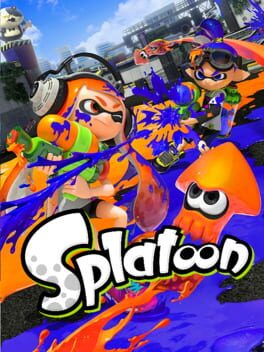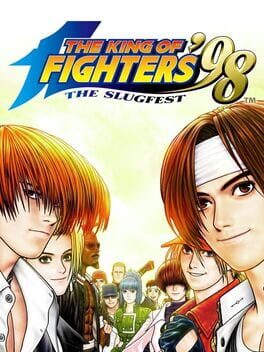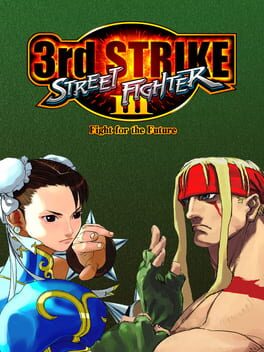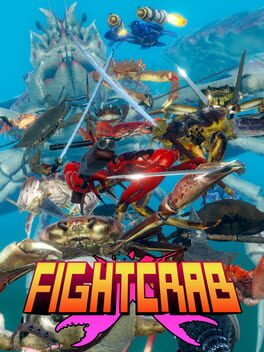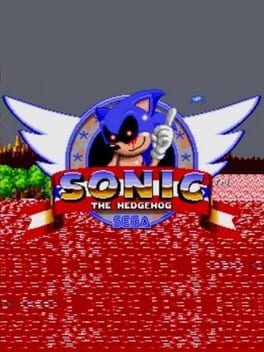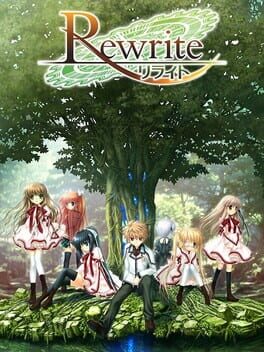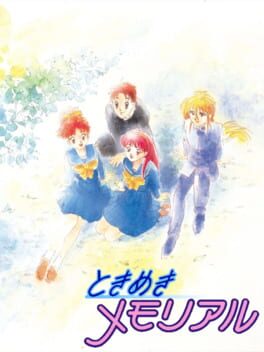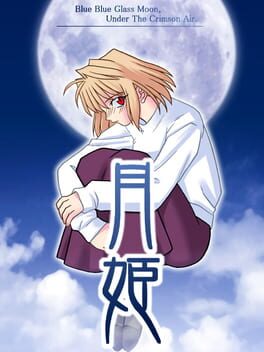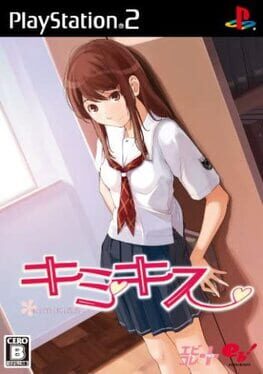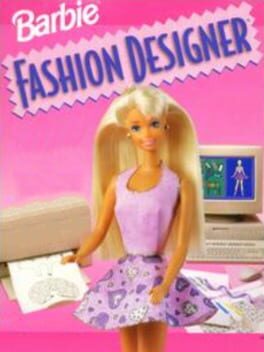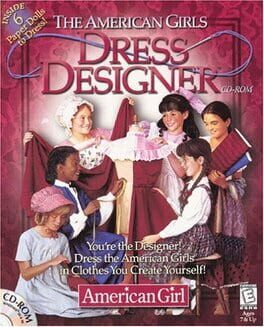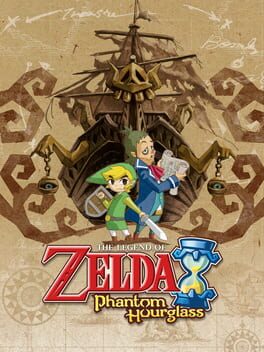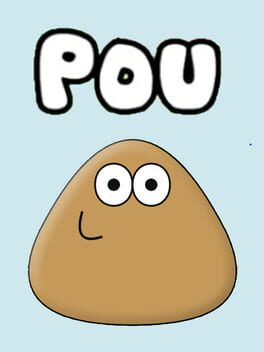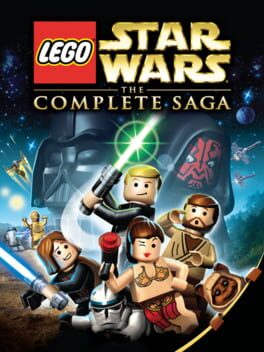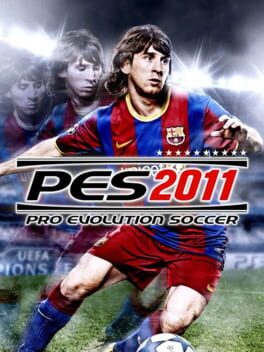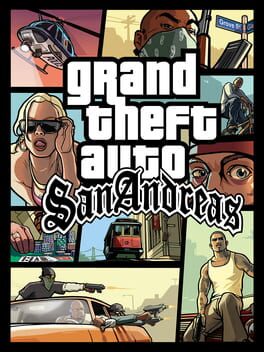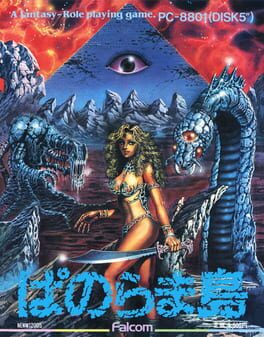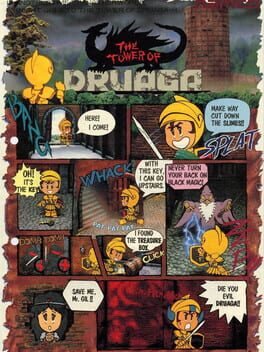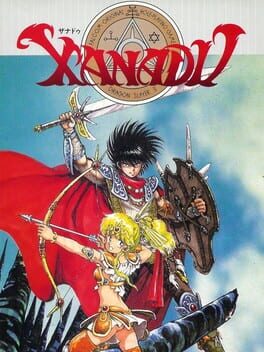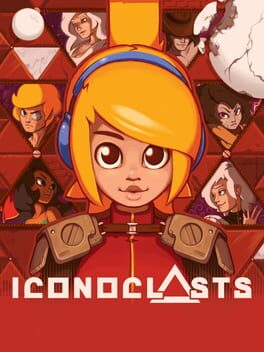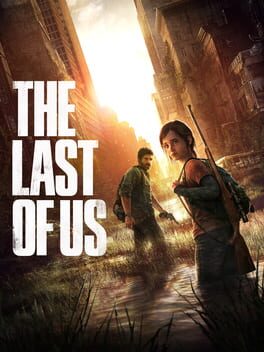Marianelalela
42 reviews liked by Marianelalela
Known Unknowns
2016
I don’t know if it’s the rich school, the American (or Canadian, whatever) setting, or what, but I keep reading these teenagers being written like how do you do fellow kids all the time. It wants to speak about the complexities of communication dynamics in (today's) adolescence without getting a real adolescent feel. To illustrate, the surreal encounters where the text is conveyed through emojis is kind of clever in that it manages to use ambiguous yet somewhat common language to speak and yet it also seems a bit like this would be Twin Peaks if it was made for zoomers.
I played Hennessy’s two previous games too and while I think there is some honest interest to look back into the problems rooted in adolescence, it probably would be better to translate all that into the (almost) adult world where there isn’t that disconnection between what you think the new generation is like and the teenage drama that has been carried further from school into the modern world. Or you can use adolescence as a medium, just focus on what actually troubles you instead of trying to care about the not problems that may or may not be there. It’s time to accept that the transition to adult life in this day and age takes a while longer than it used to, for better or worse, and start working from there.
I played Hennessy’s two previous games too and while I think there is some honest interest to look back into the problems rooted in adolescence, it probably would be better to translate all that into the (almost) adult world where there isn’t that disconnection between what you think the new generation is like and the teenage drama that has been carried further from school into the modern world. Or you can use adolescence as a medium, just focus on what actually troubles you instead of trying to care about the not problems that may or may not be there. It’s time to accept that the transition to adult life in this day and age takes a while longer than it used to, for better or worse, and start working from there.
Butterfly Soup 2
2022
Butterfly Soup 2
2022
The chapter where they talk about stuff.
More insight into their families, expectations for their future and how their diverse and messy backgrounds affected their worldview. Always interesting to see this complicated relations between Asian-Americans, their immigrant parents and the country of origin of their distant families, on top of explorations of gender that they still don't know much about being the year that it is ("Yes We Can"); even if sometimes it falls into the trap of "PSA time: let's teach some stuff" when talking about deeper issues and feelings they bottle up, maybe because there's this idea that, for the sequel, it necessarily has to be more serious and explanatory. "But I thought racism was over".
But what the hell, I can't help it. I love these dorks. When I finished it I stared at the menu screen for several minutes, listening to the song and thinking about them. They'll get through it, it'll be okay.
More insight into their families, expectations for their future and how their diverse and messy backgrounds affected their worldview. Always interesting to see this complicated relations between Asian-Americans, their immigrant parents and the country of origin of their distant families, on top of explorations of gender that they still don't know much about being the year that it is ("Yes We Can"); even if sometimes it falls into the trap of "PSA time: let's teach some stuff" when talking about deeper issues and feelings they bottle up, maybe because there's this idea that, for the sequel, it necessarily has to be more serious and explanatory. "But I thought racism was over".
But what the hell, I can't help it. I love these dorks. When I finished it I stared at the menu screen for several minutes, listening to the song and thinking about them. They'll get through it, it'll be okay.
Butterfly Soup 2
2022
Briana Lei and her first Butterfly Soup are part of the wave of "video games that do not love our time, but the people who live in it"
It is a very difficult pill for me to swallow because this year I was expecting a lot of games that have not gone beyond remarkable, but I find it hard to believe that the one I like the least is a surprise game by Briana Lei, but of course, in hindsight, it was already clear that it would be like this. The first BP articulated a teenage fantasy where the only normative thing was its VN format and semi-anime Tumblr visuals. It was an incisive political story that almost openly framed the new generations raised in the 2000s-both in the good and in the bad-and how they lived a full adolescence in our modern turbo-capitalist world, whose foundations have been built with such eagerness that it seems There will be no room for drastic sociopolitical change that maintains and ensures equity for people. Demonstrations against homosexual marriage, situations where multiculturalism, disappointment and paternalism towards a generation trapped in an unequal system... And in the center a group of girls of varied ethnicity trying to live. everything else needs a solution, but it's in the background, because in the chaos, these girls have the right to live, we all do.
It's perfect, no need for a sequel. The important thing was the girls, yes, but their situation in the world, not so much the laughing breezy dialogues.
BS2 has a lot of heart, but it succumbs to the "improve and expand" preconceptions and thereby becomes something worse than a compliant sequel: A deal.
Expand, continuing a story, and improve by emphasizing personalities to moments of exaggeration.
You play, I tuck you in. You know this, take more of it.
It tries to pay REAL attention, and point out the social causes that didn't have as much depth in the first game as
The exploration of gender and sexuality, racism, the complexity of family relationships... But the truth is that all this was already in the first game, it was not underlined, but its presence crossed the entire work like a lightning bolt. It was not heard clearly, but it had an impact after the fact.
The pandemic has changed the world for the worse if possible for some, we go two steps forward and one step back. It's still a step forward, but still.
We can't let social and moral causes become fictional genres, not even Briana Lei, because this is what has happened in BS2.
I wanted to write more things, but it's getting difficult for me.
Bye bye, Butterlfy
It is a very difficult pill for me to swallow because this year I was expecting a lot of games that have not gone beyond remarkable, but I find it hard to believe that the one I like the least is a surprise game by Briana Lei, but of course, in hindsight, it was already clear that it would be like this. The first BP articulated a teenage fantasy where the only normative thing was its VN format and semi-anime Tumblr visuals. It was an incisive political story that almost openly framed the new generations raised in the 2000s-both in the good and in the bad-and how they lived a full adolescence in our modern turbo-capitalist world, whose foundations have been built with such eagerness that it seems There will be no room for drastic sociopolitical change that maintains and ensures equity for people. Demonstrations against homosexual marriage, situations where multiculturalism, disappointment and paternalism towards a generation trapped in an unequal system... And in the center a group of girls of varied ethnicity trying to live. everything else needs a solution, but it's in the background, because in the chaos, these girls have the right to live, we all do.
It's perfect, no need for a sequel. The important thing was the girls, yes, but their situation in the world, not so much the laughing breezy dialogues.
BS2 has a lot of heart, but it succumbs to the "improve and expand" preconceptions and thereby becomes something worse than a compliant sequel: A deal.
Expand, continuing a story, and improve by emphasizing personalities to moments of exaggeration.
You play, I tuck you in. You know this, take more of it.
It tries to pay REAL attention, and point out the social causes that didn't have as much depth in the first game as
The exploration of gender and sexuality, racism, the complexity of family relationships... But the truth is that all this was already in the first game, it was not underlined, but its presence crossed the entire work like a lightning bolt. It was not heard clearly, but it had an impact after the fact.
The pandemic has changed the world for the worse if possible for some, we go two steps forward and one step back. It's still a step forward, but still.
We can't let social and moral causes become fictional genres, not even Briana Lei, because this is what has happened in BS2.
I wanted to write more things, but it's getting difficult for me.
Bye bye, Butterlfy
Butterfly Soup 2
2022
Butterfly Soup became a symbol upon its ending and the popularity/status it gained along the following 5 years. If the first one was about a fantasy created within a group of friends so strong that it was capable of ignoring the surrounding noise, Butterfly Soup 2 is the reality faced after the magical days of uncertainty materialized. Now the conflicts permeate even those reunions with the friends that not long ago could block the entire world. Fantastic and real exchange roles.
It’s actually interesting to use a direct sequel to question the fantastical symbolic status already settled and work some of the not so happy parts that come after it. And it’s not that the kids suddenly are obstructed by the world that confronts them, it's that the conflicts are inside them. It’s not that Diya’s mother doesn’t understand her or that Noelle’s parents force her to study Chinese, it’s that Diya wants to be capable of talking with her mother and Noelle wants to connect with her roots for reasons she didn’t notice before.
It’s a process of understanding that finding the place where you can finally form your true self also means that you won’t fit all molds, even the ones you desire. It’s learning to live with those contradictions and begin working your way through them. In the end, these kids will grow up and will always be themselves, but they’ll still have to face their inner worries on their way. The group stops being just a place to forget about the world and matures into a space where to deal with their inner conflicts in company.
It’s actually interesting to use a direct sequel to question the fantastical symbolic status already settled and work some of the not so happy parts that come after it. And it’s not that the kids suddenly are obstructed by the world that confronts them, it's that the conflicts are inside them. It’s not that Diya’s mother doesn’t understand her or that Noelle’s parents force her to study Chinese, it’s that Diya wants to be capable of talking with her mother and Noelle wants to connect with her roots for reasons she didn’t notice before.
It’s a process of understanding that finding the place where you can finally form your true self also means that you won’t fit all molds, even the ones you desire. It’s learning to live with those contradictions and begin working your way through them. In the end, these kids will grow up and will always be themselves, but they’ll still have to face their inner worries on their way. The group stops being just a place to forget about the world and matures into a space where to deal with their inner conflicts in company.
Hellish Quart
2021
Thoughts have arisen playing this, more aesthetic than the game itself
A couple of notes:
-The vast majority of confrontations in fighting games are raised under an ultrafictitious logic that the aesthetics of combat is something similar to "a dance", perhaps that is why tremendous animations are designed with an almost liquid fluidity of movement, that's great, the body, as a flexible element disconnected from logic, should always be explored, but it is very far from the truth; Martial arts training, adapted for sport or not, is remotely similar to dance in that both are rehearsal and rehearsal, to feel and perfect a physical technique, but not much more. And the direct and real metrics of a fight are opposite to those of a couple dance. The aesthetic satisfaction that comes from seeing performers at their peak of skill is the only link between the two arts, and that too is probably inaccurate, because fighters must fail and dancers cannot afford it.
-The fights on martial arts action movies , THAT is dance. complete and absolute
- The possibilities of space and its pleasures in video games are a long way from being fully resolved or discovered and clinging to combos and the metagames has resulted in an unconscious disregard for topography and the impact it has on 3D action. Devil May Cry 4 and the trickster style are somewhat to blame for this by proposing a game of juggling, and partly because we have focused a lot on the sensations of weight, jumping and the impact of the blows, which is perfectly fine, but What about the ground we land and step on?
-From the point of view of competition, the best is an infinite arena, without obstacles or topography as such; smooth floor, colorful backgrounds.
But then the hitboxes of each fighter should be more imprecise and chaotic, right? obeying the bodies and less computer codes.
-That's bullshit, digital bodies are made of computer code
-F.uck
Savaki, Tekken 4 and Hellish Quart are my favorite 3d fighting games for approaching space combat from the flexibility and chaos of collisions and location, rather than hitbox and perfect distances. That's the only thing I have more or less clear lol
A couple of notes:
-The vast majority of confrontations in fighting games are raised under an ultrafictitious logic that the aesthetics of combat is something similar to "a dance", perhaps that is why tremendous animations are designed with an almost liquid fluidity of movement, that's great, the body, as a flexible element disconnected from logic, should always be explored, but it is very far from the truth; Martial arts training, adapted for sport or not, is remotely similar to dance in that both are rehearsal and rehearsal, to feel and perfect a physical technique, but not much more. And the direct and real metrics of a fight are opposite to those of a couple dance. The aesthetic satisfaction that comes from seeing performers at their peak of skill is the only link between the two arts, and that too is probably inaccurate, because fighters must fail and dancers cannot afford it.
-The fights on martial arts action movies , THAT is dance. complete and absolute
- The possibilities of space and its pleasures in video games are a long way from being fully resolved or discovered and clinging to combos and the metagames has resulted in an unconscious disregard for topography and the impact it has on 3D action. Devil May Cry 4 and the trickster style are somewhat to blame for this by proposing a game of juggling, and partly because we have focused a lot on the sensations of weight, jumping and the impact of the blows, which is perfectly fine, but What about the ground we land and step on?
-From the point of view of competition, the best is an infinite arena, without obstacles or topography as such; smooth floor, colorful backgrounds.
But then the hitboxes of each fighter should be more imprecise and chaotic, right? obeying the bodies and less computer codes.
-That's bullshit, digital bodies are made of computer code
-F.uck
Savaki, Tekken 4 and Hellish Quart are my favorite 3d fighting games for approaching space combat from the flexibility and chaos of collisions and location, rather than hitbox and perfect distances. That's the only thing I have more or less clear lol
Originally posted here on 26/09/2022: https://xatornova.blogspot.com/2022/09/gothic-wa-mahou-otome.html
Microtransactions, archetypal anime girls and an overload of monetary systems are enough alarm signs that the game should be nothing more than a product to shamelessly steal the money from the average otaku. Though since a game is not what it seems to be, but rather what it actually happens to be, a small peek at the mobile game "Gothic Wa Mahou Otome" immediately reveals its quality as an action game, where the tactile control in combination with shooting game mechanics gives birth to one of the greatest exemplars of the aesthetic capability of movement in the genre.
The key of its success is in the scoring system. To obtain points, naturally a player has to hit the enemies in a stage. However, numerous variables are added that let the player increase their score. Firstly, the avatar is surrounded by a visible ring for the player, which extends its radius if they keep shooting down enemies. If the target is within this circle, the power of the shot is increased, and with that the score of the player. Additionally, if the player keeps hitting enemies continuously to enemies without getting hit themself, the score multiplier will increase. Thus, the player is met with an apparently contradictory objective: To keep themself near the objective that it wishes to attack, and to avoid crashing onto them or their bullets. In this way, the player is unavoidably subject to decide constantly in the best course of action to increase their score.
It is through this that the mechanics of the game acquire higher relevance. The higher the ranking that the player gets at the end of each level, which relies on the score, chaining of hits or amount of taken hits, the higher is the amount of resources such as money to buy temporal upgrades, and through this the player has an incentive to improve their performance to continue with the game in the most difficult stages. Furthermore, the higher difficulties, which hand out the best resources, consist of an immediate response from the enemies, with bullets of them in retaliation that are directed towards the position of the avatar to force them to distance themself from their target.
All of these elements in conjunction conform a frenzy where the player is encouraged to master the system to continue and take decisions in seconds, in order to fully take the attention of the player to their surroundings. To enhance the action through chaining mechanics had already been explored by director Tsuneki Ikeda in his previous titles, particularly his 2002 masterpiece "DoDonPachi DaiOuJou". Even though this title doesn't have the trance that comes from a complete and continuous adventure that arises in a traditional arcade game, where defeat used to imply to restart the playthrough from scratch, Ikeda manages to construct a different one through deepening the scoring system and the tactile controls, which brings with itself a cathartic sense of examining and scratching the screen to look for an opening. It is a feeling that isn't common even among other mobile shooting games, such as the ports of Ikeda's games in touch devices, or free-to-play shooting games like "Azur Lane" and "World Witches: United Front", which is representative of the director's control over action games and his evolution as a developer.
As a cherry on top, the game happens to be an inexhaustible source of experimentation, given that the shooting pattern of the avatar changes with each character, and which ones the player has to their disposition is random. One can have a short-distance pattern, another one is long distance, yet weak, another one targets behind, or to the sides, other ones have unorthodox patterns, and naturally, this affects how the player approaches enemies to obtain better scores. Thus, the player can experiment with different stages, which are not just the main campaign, which provides more than one hundred of challenges, but also with different additional scenarios that are updated every once in a while, surpassing thus even the overwhelming feeling of possibilities in Junichi Kashiwagi's "Dariusburst Chronicle Saviours".
"Gothic wa Mahou Otome" is currently only available in Japan, and it is to expect that after its unavoidable finale, it will be available for international audiences as a paid game, in the same way as its peer, Nanoha Hata's masterful "Arkanoid vs. Space Invaders", because just like that game in its original state as another free-to-play experience, was able to demonstrate the vitality and inheritance of the arcade action in our current times.
Microtransactions, archetypal anime girls and an overload of monetary systems are enough alarm signs that the game should be nothing more than a product to shamelessly steal the money from the average otaku. Though since a game is not what it seems to be, but rather what it actually happens to be, a small peek at the mobile game "Gothic Wa Mahou Otome" immediately reveals its quality as an action game, where the tactile control in combination with shooting game mechanics gives birth to one of the greatest exemplars of the aesthetic capability of movement in the genre.
The key of its success is in the scoring system. To obtain points, naturally a player has to hit the enemies in a stage. However, numerous variables are added that let the player increase their score. Firstly, the avatar is surrounded by a visible ring for the player, which extends its radius if they keep shooting down enemies. If the target is within this circle, the power of the shot is increased, and with that the score of the player. Additionally, if the player keeps hitting enemies continuously to enemies without getting hit themself, the score multiplier will increase. Thus, the player is met with an apparently contradictory objective: To keep themself near the objective that it wishes to attack, and to avoid crashing onto them or their bullets. In this way, the player is unavoidably subject to decide constantly in the best course of action to increase their score.
It is through this that the mechanics of the game acquire higher relevance. The higher the ranking that the player gets at the end of each level, which relies on the score, chaining of hits or amount of taken hits, the higher is the amount of resources such as money to buy temporal upgrades, and through this the player has an incentive to improve their performance to continue with the game in the most difficult stages. Furthermore, the higher difficulties, which hand out the best resources, consist of an immediate response from the enemies, with bullets of them in retaliation that are directed towards the position of the avatar to force them to distance themself from their target.
All of these elements in conjunction conform a frenzy where the player is encouraged to master the system to continue and take decisions in seconds, in order to fully take the attention of the player to their surroundings. To enhance the action through chaining mechanics had already been explored by director Tsuneki Ikeda in his previous titles, particularly his 2002 masterpiece "DoDonPachi DaiOuJou". Even though this title doesn't have the trance that comes from a complete and continuous adventure that arises in a traditional arcade game, where defeat used to imply to restart the playthrough from scratch, Ikeda manages to construct a different one through deepening the scoring system and the tactile controls, which brings with itself a cathartic sense of examining and scratching the screen to look for an opening. It is a feeling that isn't common even among other mobile shooting games, such as the ports of Ikeda's games in touch devices, or free-to-play shooting games like "Azur Lane" and "World Witches: United Front", which is representative of the director's control over action games and his evolution as a developer.
As a cherry on top, the game happens to be an inexhaustible source of experimentation, given that the shooting pattern of the avatar changes with each character, and which ones the player has to their disposition is random. One can have a short-distance pattern, another one is long distance, yet weak, another one targets behind, or to the sides, other ones have unorthodox patterns, and naturally, this affects how the player approaches enemies to obtain better scores. Thus, the player can experiment with different stages, which are not just the main campaign, which provides more than one hundred of challenges, but also with different additional scenarios that are updated every once in a while, surpassing thus even the overwhelming feeling of possibilities in Junichi Kashiwagi's "Dariusburst Chronicle Saviours".
"Gothic wa Mahou Otome" is currently only available in Japan, and it is to expect that after its unavoidable finale, it will be available for international audiences as a paid game, in the same way as its peer, Nanoha Hata's masterful "Arkanoid vs. Space Invaders", because just like that game in its original state as another free-to-play experience, was able to demonstrate the vitality and inheritance of the arcade action in our current times.
Tunic
2022
Hace dos semanas que acabé Tunic y desde entonces llevo dándole vueltas a cómo trasladar a palabras la fascinación que me produce. Supongo no hay mejor halago que la persistencia en mis pensamientos de sus misterios y los códigos que los ocultan.
Un canto al descubrimiento como este, con la fe que ello conlleva en la era de internet, me hacen pensar en Tunic como uno de los videojuegos más valientes de los últimos años. También es posible mirar al pasado sin condescendencia.
Un canto al descubrimiento como este, con la fe que ello conlleva en la era de internet, me hacen pensar en Tunic como uno de los videojuegos más valientes de los últimos años. También es posible mirar al pasado sin condescendencia.
Flores con Historias
2017
Flores con Historias
2017
Es difícil subestimar los nervios que me atrapaban mientras leía las experiencias en Flores con Historias. Mi experiencia con el proceso que culminó con la legalización del aborto no es tan directa como la de aquellas que se presentaban a las marchas a pelear por este derecho, pero aún así me dan escalofríos.
Habiendo terminado mis estudios secundarios en el año 2020, mismo año en el que finalmente se legalizó el aborto en Argentina, y habiendo desarrollando esta educación a unas cuadras del Congreso donde se hacían las marchas tanto de pañuelos verdes como de pañuelos celestes, pude vivir el impacto social causado por este proceso de legalización de forma muy cercana.
Yo estudié en una escuela técnica, curso completamente populado por hombres. Toda mención del aborto y su legalización era acompañado de chistes misóginos y a su lado, obviamente, las risas y la antipatía. Era la nueva cosa copada de la cual reírse. Era tópico. El odio al feminismo ("feminazismo", como le solían y suelen llamar) en estos espacios es moneda común, así que por supuesto el aborto era un blanco fácil para las burlas. La ESI (Educación Sexual Integral) que el gobierno buscaba instalar en las escuelas era recibida con una falta de seriedad que ya era común para mi.
Puede parecer mucho esperar madurez de pibes de secundaria (aunque cuando las marcha má comunes se volvía, ya estábamos llegando a los 18 años... estábamos grandes), pero me parece importante recalcar como la desinformación y el odio tenía un agarre tan fuerte sobre la población. Esta era la mayor fuente de mi personal impotencia. Era debilitante ver la recepción que tenía, porque sabía que estas ideas idiotas tenían sus raíces en páginas de Facebook cuyo única forma de entretenimiento es alguna variación de "jaja progres/mujeres", que ya se estaban volviendo parte integral de la personalidad de muchos de los pibes con los cuales compartía salón.
Y puede parecer egocentrista tal fijación por mi propia experiencia, pero lo llamo a atención porque me duele pensar en todas las pibas, que habrán pasado por ambientes similares. La impotencia de ver cómo un proceso tan importante para la autonomía de tu cuerpo se reduce a chiste para generar unas risas en el aula, la debilidad causada por los abusos verbales que podía una recibir en la calle solo por portar el pañuelo verde (que a mi hermana le ha pasado varias veces), y el peso de saber que aún si no se legalizaba el aborto, que iba a seguir sucediendo en condiciones miserables.
Quisiera recalcar la elección del autor a poder asignarle años a cada historia. No sé si será producto de mi propia ignorancia (esperemos que no porque si no quedé como un pelotudo), pero le pifié a todas las fechas menos una. Esto me dejó muy, muy claro que a pesar de tener 50 años de distancia entre la primera fecha y la última, las cosas han cambiado poco y nada. Y por eso se debe seguir luchando.
Flores con Historias es una colección de anécdotas. Creo que cada uno de nosotros (aunque me refiero específicamente a los argentinos, reconozco que la lucha por el aborto es también una realidad que muchas más naciones viven), también tenemos una colección así. Ya sean testimonios propios, ajenos, cercanos o lejanos. Duele pensar en todas las personas que no pudieron contar sus historias. La misma descripción del juego te dice que no se puede cambiar el pasado. Pero creo que puede encontrarse refugio en que sí se hizo algo de progreso, y que ahora muchas pibas sí van a poder contarla.
Es ley.
Habiendo terminado mis estudios secundarios en el año 2020, mismo año en el que finalmente se legalizó el aborto en Argentina, y habiendo desarrollando esta educación a unas cuadras del Congreso donde se hacían las marchas tanto de pañuelos verdes como de pañuelos celestes, pude vivir el impacto social causado por este proceso de legalización de forma muy cercana.
Yo estudié en una escuela técnica, curso completamente populado por hombres. Toda mención del aborto y su legalización era acompañado de chistes misóginos y a su lado, obviamente, las risas y la antipatía. Era la nueva cosa copada de la cual reírse. Era tópico. El odio al feminismo ("feminazismo", como le solían y suelen llamar) en estos espacios es moneda común, así que por supuesto el aborto era un blanco fácil para las burlas. La ESI (Educación Sexual Integral) que el gobierno buscaba instalar en las escuelas era recibida con una falta de seriedad que ya era común para mi.
Puede parecer mucho esperar madurez de pibes de secundaria (aunque cuando las marcha má comunes se volvía, ya estábamos llegando a los 18 años... estábamos grandes), pero me parece importante recalcar como la desinformación y el odio tenía un agarre tan fuerte sobre la población. Esta era la mayor fuente de mi personal impotencia. Era debilitante ver la recepción que tenía, porque sabía que estas ideas idiotas tenían sus raíces en páginas de Facebook cuyo única forma de entretenimiento es alguna variación de "jaja progres/mujeres", que ya se estaban volviendo parte integral de la personalidad de muchos de los pibes con los cuales compartía salón.
Y puede parecer egocentrista tal fijación por mi propia experiencia, pero lo llamo a atención porque me duele pensar en todas las pibas, que habrán pasado por ambientes similares. La impotencia de ver cómo un proceso tan importante para la autonomía de tu cuerpo se reduce a chiste para generar unas risas en el aula, la debilidad causada por los abusos verbales que podía una recibir en la calle solo por portar el pañuelo verde (que a mi hermana le ha pasado varias veces), y el peso de saber que aún si no se legalizaba el aborto, que iba a seguir sucediendo en condiciones miserables.
Quisiera recalcar la elección del autor a poder asignarle años a cada historia. No sé si será producto de mi propia ignorancia (esperemos que no porque si no quedé como un pelotudo), pero le pifié a todas las fechas menos una. Esto me dejó muy, muy claro que a pesar de tener 50 años de distancia entre la primera fecha y la última, las cosas han cambiado poco y nada. Y por eso se debe seguir luchando.
Flores con Historias es una colección de anécdotas. Creo que cada uno de nosotros (aunque me refiero específicamente a los argentinos, reconozco que la lucha por el aborto es también una realidad que muchas más naciones viven), también tenemos una colección así. Ya sean testimonios propios, ajenos, cercanos o lejanos. Duele pensar en todas las personas que no pudieron contar sus historias. La misma descripción del juego te dice que no se puede cambiar el pasado. Pero creo que puede encontrarse refugio en que sí se hizo algo de progreso, y que ahora muchas pibas sí van a poder contarla.
Es ley.
14 lists liked by Marianelalela
by TheMatee |
15 Games
by TheMatee |
20 Games
by ShumaSegata |
79 Games
by Lot0 |
6 Games
by anita |
30 Games
by Liduri |
16 Games
by rober |
13 Games
by michaelmanntina |
7 Games
by Xator_Nova |
92 Games
by Beet |
6 Games



